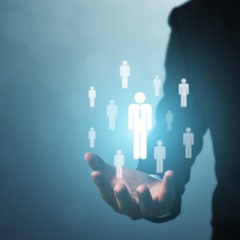
The Next Stage for Supply Chain in Myanmar
For many years Myanmar Supply Chain has been simple. It comprised of Importing, Exporting, Domestic Distribution & Transport and Warehousing. This was all the country required and it was all that the infrastructure could provide. Due to limited access to the Internet, unreliable electricity supply and high costs for advanced software systems, Supply Chain remained at a basic level. What has changed?
Firstly the Internet has improved in terms of speed, reliability and coverage and in a very short period of time.
Secondly, there is increased competition for market share from both overseas and local companies. This had led to an environment where businesses are forced to be more accurate with their forecasting and look at automation to improve efficiencies. So what are we seeing in the market as organisations move to the next stage in Supply Chain?
Many of our clients, especially in the FMCG and Food & Beverage industries, are asking us to search for people with strong Demand Planning or Forecasting experience. However, many companies are not clear as to what this is and why it is so important for them. This is the reason for our blog today, to add some detail on this very important area of Supply Chain - Demand Planning and Forecasting.
A Key element to make Profit-Driven Supply Chain Cycle profitable is demand planning. Within this process your forecasting must be as accurate as possible. This means realistic predictions for the demand for your products or use of your services using your experience, data sources and software. Are competitors entering your sector? Whether you are a manufacturer, a service provider or a logistics supplier, what is your best guess for variations on demand based on seasonal changes, competitor activity, national or international changes and or other changes forced upon you leading to variances in material costs, factory and staff costs?
All or any of these may force you to alter your sale price and may change demand volumes. Don't forget currency changes if you export. All these factors must be considered and placed in a forecast calculation for your overall planning in the future. This is the very heart of demand planning. Changes, negative or positive, will touch all your business suppliers - whether related to raw materials, energy, staff, interim staff, logistics, insurance, accounts receivable, distributors, franchisees, partners.
Remember, they will ALL benefit from the information and future forecasting you choose to provide to them, so how can you harness that? If accurate, your efforts will be appreciated. You know this opens the door to tuning your business whether this be logistics planning, or buying currency forward if exporting/importing. All are steps to reducing your fixed and variable costs AND retaining maximum profitability, despite micro or macro changes around you.
You may well earn valuable supplier and or customer loyalty as you help them plan. Your input is vital for their Demand Planning and the more accurate it is, the better forecast they achieve. There are a number of figures to "crunch" so of course software can be a valuable tool. A manufacturing line can use software to analyse in detail an existing assembly process. This may display benefits from using alternative parts in the assembly process (material, product finish, component composition) or even alternative location for assembly (moving to a factory closer to a key client). You can use software to analyse your supply chain.
Yes there is a cost, one time or maybe an annual licence cost, yet the opportunity to shave cost and increase efficiency will be ongoing year on year. There are usually a large number of variables and these mathematical variances are ideally suited for exploration in data models in software to give you the luxury of a host of variable "what if" scenarios. Software can help you create a forecast to guide you on inventory levels to maximise profits.
As with many software solutions, different products may offer a different approach to achieve the end result. You need to focus with care on your choice of software. Run some tests and try to validate the results and its recommendations for your case. These check runs or tests should be repeated a number of times. Insert some changes to the variables. Add "what if" scenarios based for example on new fuel costs or insurance fees and see if the new overall results look correct.
Test, step back and using your experience look at the overall figures forecasted and see if they make sense. Then test again. You may consider using some data from previous years and enter actual changes seen and recorded then see if the result allies with what actually happened - add data fields to include competitor or national changes.
Many of the variables will alter other variables so you may need to consider macros in fields so all are recognising changes in other fields - imagine cogs in a gearbox turning, all inter-connected. If products are perishable then other variable data is to be included. If working in medical or technology fields, other variables may be more critical in terms of new advances or world health warnings.
Nobody ever said forecasting was easy but all do say it is vital! Make sure you get input from all your company departments; legal, sales, building services, procurement, etc. Added all together you can harness the expertise IN your company and make the best guess attempt - the effort is worthwhile.
This all feeds into the long term budget plan for your company together with of course daily cash flow monitoring. Don't forget the daily monitoring may show annual patterns that can be very valuable data for future forecasts. There may be visible influences on your business every year. If you are in manufacturing you do not need us to tell you the benefit of maintaining raw material stocks at their optimum levels for overall profitability.
These efforts allow you to plan with a complete Demand Planning and Forecasting process in place, based on the predicted changes you can envisage. Record the resultant actual changes to your fixed and variable costs against plan and you add further data for your next forecast, so refining and refining the results. You have of course records showing your revenue streams and cash flow. These records and resulting variances all add further refinement to your next Demand Planning and Forecasting models.

 Myanmar
Myanmar

